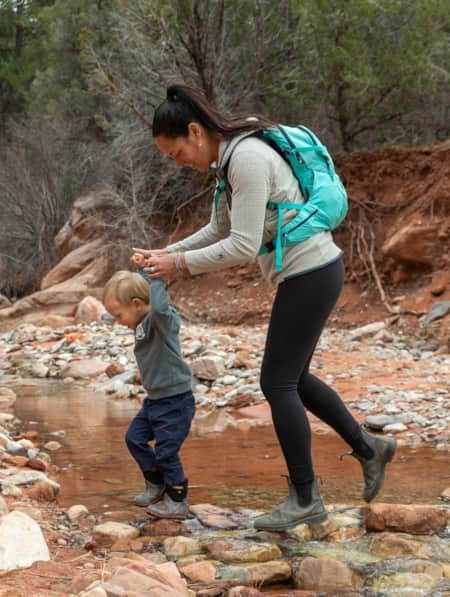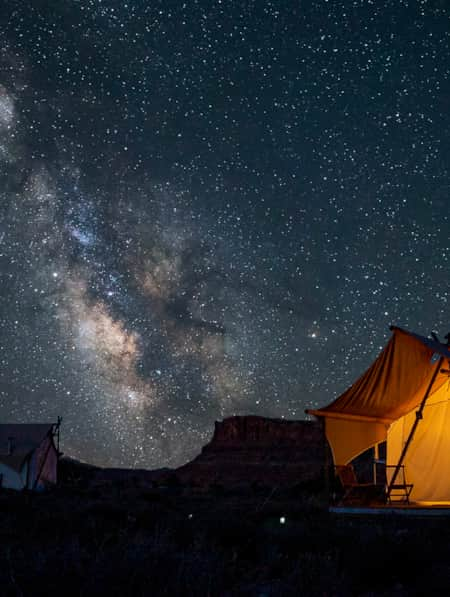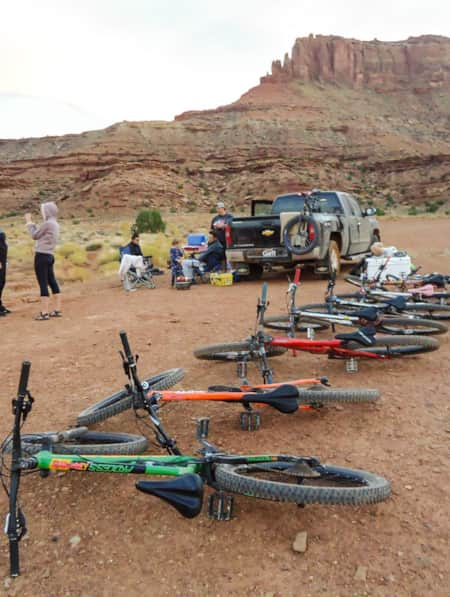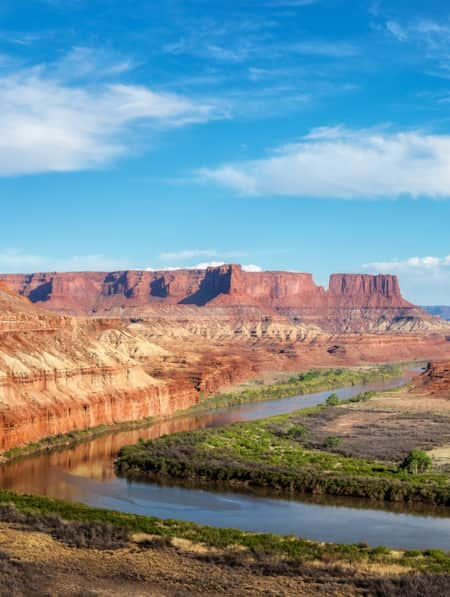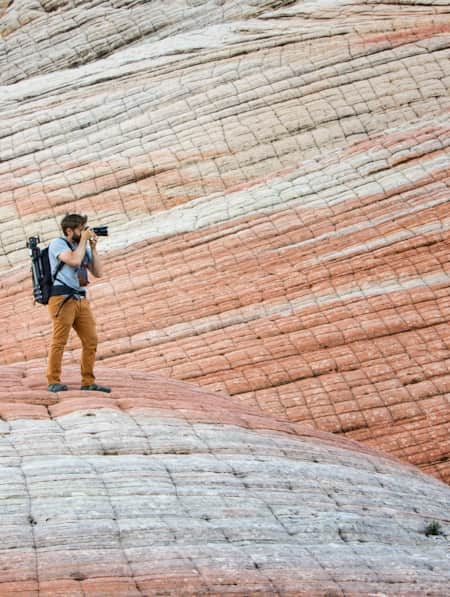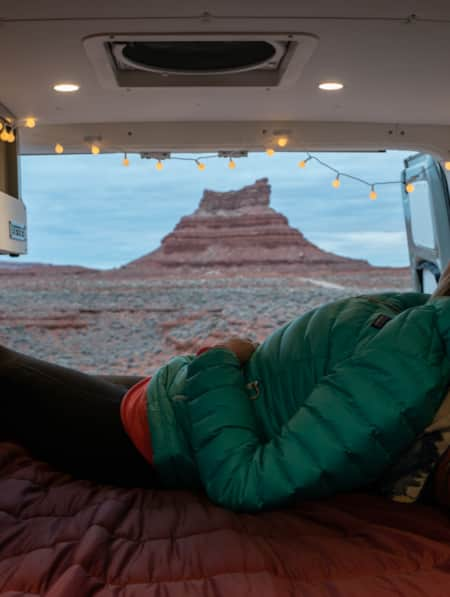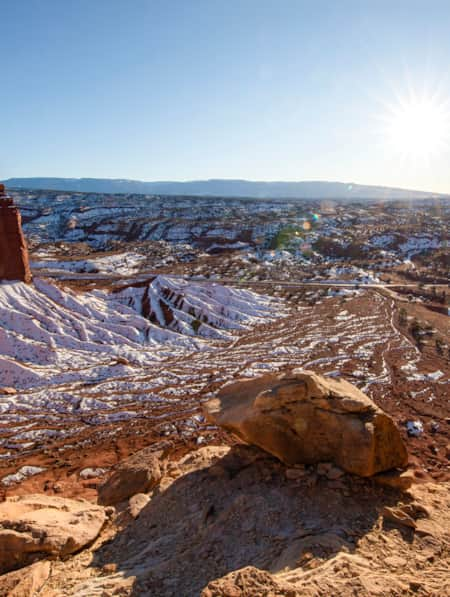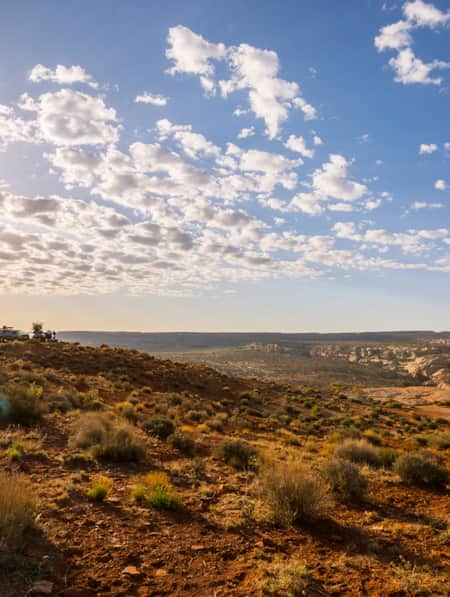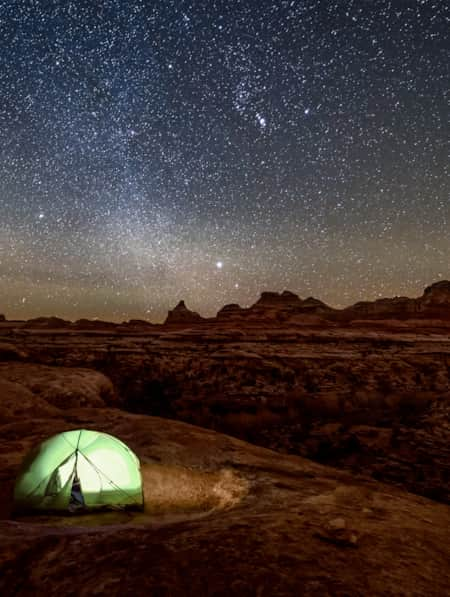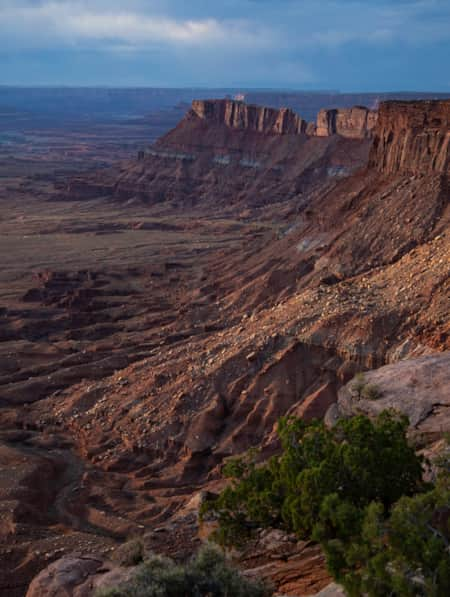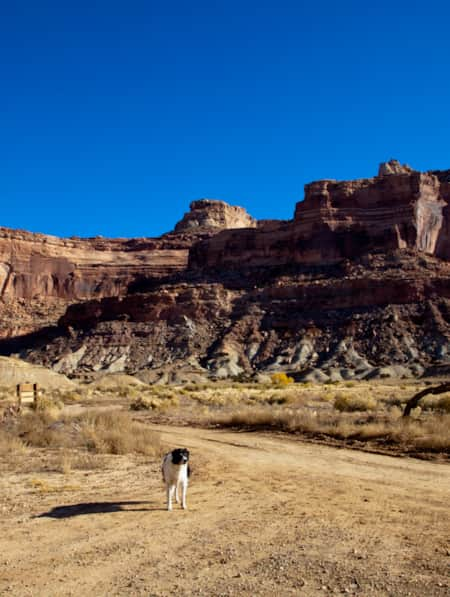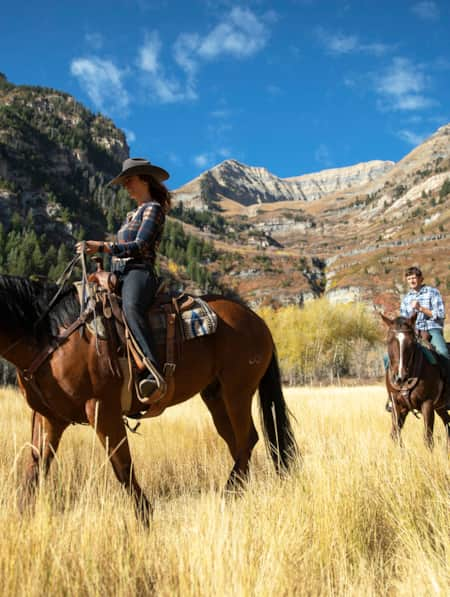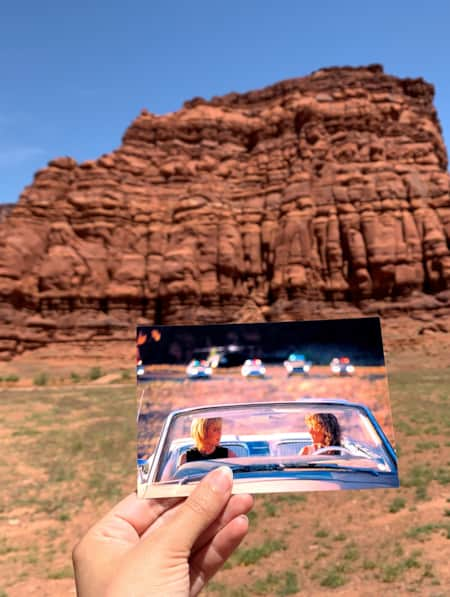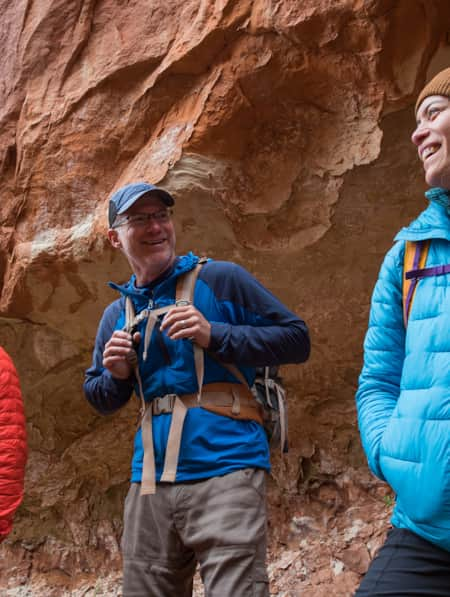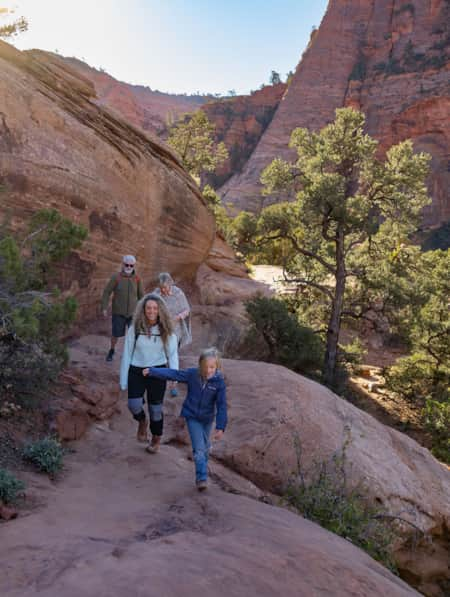The Complete Canyonlands Trip
A distant corner of Utah worthy of an extended, careful exploration.
The Canyonlands region of Utah combines the best of the Moab area's easy proximity to Arches National Park and Canyonlands National Park's most accessible district with some of the United State's most remote and culturally significant landscapes.
While this itinerary will get you started on where to go, this is a region that blossoms with high-contrast desert beauty and powerful prehistory. Take your time to learn about this destination, hire local guides and pause whenever you can to appreciate the forces of nature that created this place.
Canyonlands is made up of three land districts (and the rivers that carved it), and this itinerary explores a couple of them as part of an expansive and awe-inspiring journey through the region.
Get up early and you can catch the first few rays of sunlight streaming through Mesa Arch and the dramatic view it frames of Canyonlands National Park from atop the mesa of the Island in the Sky district. Another short hike will take you to a 1,000-foot high vantage point above the Needles District and wide-open canyonlands. Or drive to Dead Horse Point State Park, an even higher vantage point above the Colorado River, as it curves steeply around the canyon wall.
First-time visitors should plan extra days for Arches National Park and an expanded Moab adventure — just remember to reserve a timed-entry ticket for Arches if you're visiting between the months of April and October. If you're not visiting Arches, you can start the drive south on U.S. 191 toward a rugged and adventure-rich region with diverse voices as distinctive as the landscape. Criss-cross the land along the Trail of the Ancients Scenic Byway with stops in Bears Ears National Monument, the Needles district of Canyonlands, Hovenweep National Monument and the gateway communities of Monticello, Blanding and Bluff.
Wrap up the region with a guided exploration of Monument Valley Navajo Tribal Park and a trip to Natural Bridges National Monument. It's worth noting that the long, scenic roads back north tempt with detours to more of Utah's most beloved landscapes. In other words, it's worth taking the plus sign of this itinerary seriously.
Read these resources to learn how to travel thoughtfully and experience Utah most fully.
- Start: From Salt Lake City, drive roughly three and a half hours southeast to Moab
- Finish: From the Natural Bridges National Monument, head back to Salt Lake City
- Hours of driving: 16+ hours, including travel between the region and Salt Lake City

Dead Horse Point to Canyonlands
53 Miles
Utah is an outdoor adventure playground known for pushing people's limits. Today, however, acclimate to the high desert country on short trails to breathtaking views. Many get a very early start to capture one of the most-photographed sunrises around: Mesa Arch. Campers may try to get a site at Dead Horse Point State Park or Canyonlands National Park for quickest access to the sunrise spectacle. Of course, the sunrise over Utah’s Canyon Country is spectacular no matter where you are, and it’s also an ideal hour for photographing this amazing landscape throughout the park. Pick up additional photos and memories at Grand View Point, one of Canyonlands’ best overlooks. If you have come to get the heart rate up, Dead Horse Point offers more than 16 miles of singletrack with access to views that rival the Grand Canyon.
Where to Stay
In or near Moab, especially if you've planned time for Arches National Park (Read: The Best Time to Visit Moab).
Tips for Prepared Travelers
Soil Sleuth: Protecting Utah's Living Landscapes

Moab to the Needles
95 Miles
Traveling south from the Moab area, start with the side trip to the Needles Overlook for a bird's-eye view of the rugged and expansive southeastern district of Canyonlands National Park. The trip is about a 22-mile drive on C.R. 133 from U.S. 191, between Moab and Monticello. Give yourself time to walk the full length of the expansive overlook.
Continue the day with an exploratory drive through the northern areas of Bears Ears National Monument, on the Indian Creek Corridor Scenic Byway, including a stop at Newspaper Rock State Historic Site. Though ideally an overnight camping destination with extended hikes, the Needles District of Canyonlands National Park at the end of the byway has a couple of easier hikes to introduce you to the rugged red rock terrain.
Where to Stay
Camp in Needles Outpost or within Canyonlands or head to Monticello, Blanding or Bluff for lodging.
Tips for Prepared Travelers
Hiking Southern Utah with Younger Children: Tips for Family-Friendly Adventure

Southern Bears Ears and Pioneer History
97 Miles
Your best introduction to Bears Ears might just be a stop at Edge of the Cedars State Park Museum, whose collection highlights artifacts and lifestyle of Ancestral Puebloan culture. Introductory hikes to the southern area of Bears Ears include House on Fire and Cave Towers, but an even more accessible and well-interpreted trail is the Butler Wash Ruins Overlook. Whether day hiking or backpacking, visitors may need to obtain a permit or pass in order to do so; learn more at blm.gov.
The eclectic town of Bluff offers great local dining, lodging and the Bears Ears Education Center. The education center offers tips for visiting with respect and detailed information for safely visiting the monument, the United State's first monument created at the request of Native Americans. Visit Bluff Fort Historic Site to fill in the details of this area's pioneer past.
Where to Stay
Maintain your overnight base camp in Blanding or Bluff for lodging, or opt for the internationally-certified Dark Sky Park Hovenweep National Monument for camping, stargazing and an early start to tomorrow’s adventure; advance camping reservations available at recreation.gov.
Tips for Prepared Travel
The area is open to visitors, but please review our travel advisory page for respect and protect practices.

Ancestral Lives and Contemporary Art
133 Miles
If you camped overnight in Hovenweep National Monument and the skies were clear, you’ll proceed starstruck to the well-interpreted trails of the monument to peer into the lives of an ancient culture who built astonishing multistoried towers on the edge of a canyon more than 700 years ago. Meanwhile, Bluff is a small town with a big personality and serves great local food and coffee while the nearby Twin Rocks Trading Post honors local Navajo artists with fairly priced, museum-caliber baskets and art. (Read: The Navajo Basketmakers.) The tour continues near the south end of Bears Ears, with an easy stop at Sand Island petroglyphs and a more challenging visit to the River House Ruin, which showcases a confluence of ancient culture with Mormon pioneer culture.
Given enough daylight, plan the 17-mile tour along the gravel road through the geographically fascinating Valley of the Gods. With high clearance, you can also self-guide a portion of Monument Valley Navajo Tribal Park, but the best tours are with a local guide. Half-day and full-day tours are available, as are nearby accommodations.
Where to Stay
Rest your feet after a long day at Goulding's Lodge, located just outside the borders of Monument Valley.
Tips for Prepared Travelers
The Petroglyphs of Comb Ridge and Sand Island Petroglyph Site

Monument Valley and Natural Bridges
76 Miles
Monument Valley Navajo Tribal Park awaits. Book a Jeep tour in advance to get the best access to the park. There are tours of varying lengths depending on how much time you want to spend exploring the Navajo art, artifacts, Western memorabilia and Navajo tacos of Goulding’s Lodge. Unless you're pulling a trailer or driving an RV, take the winding, unpaved switchbacks of the Moki Dugway up S.R. 261 towards Natural Bridges National Monument. Along the way, make the side trip to Goosenecks State Park, an excellent overlook of the San Juan River (that can also be picked up the day before with Valley of the Gods).
While the monument can be enjoyed from a scenic drive with overlooks, adventurous visitors can hike down to one or all three natural bridges, with an option to connect them all via an extended backcountry hike, time, preparedness and stamina permitting.
With Grand Staircase, Glen Canyon and Lake Powell just to the west, there's plenty more to explore in this corner of Utah. Otherwise, enjoy the scenic Bicentennial Highway Scenic Byway (S.R. 95) back to I-70 and the road home.
